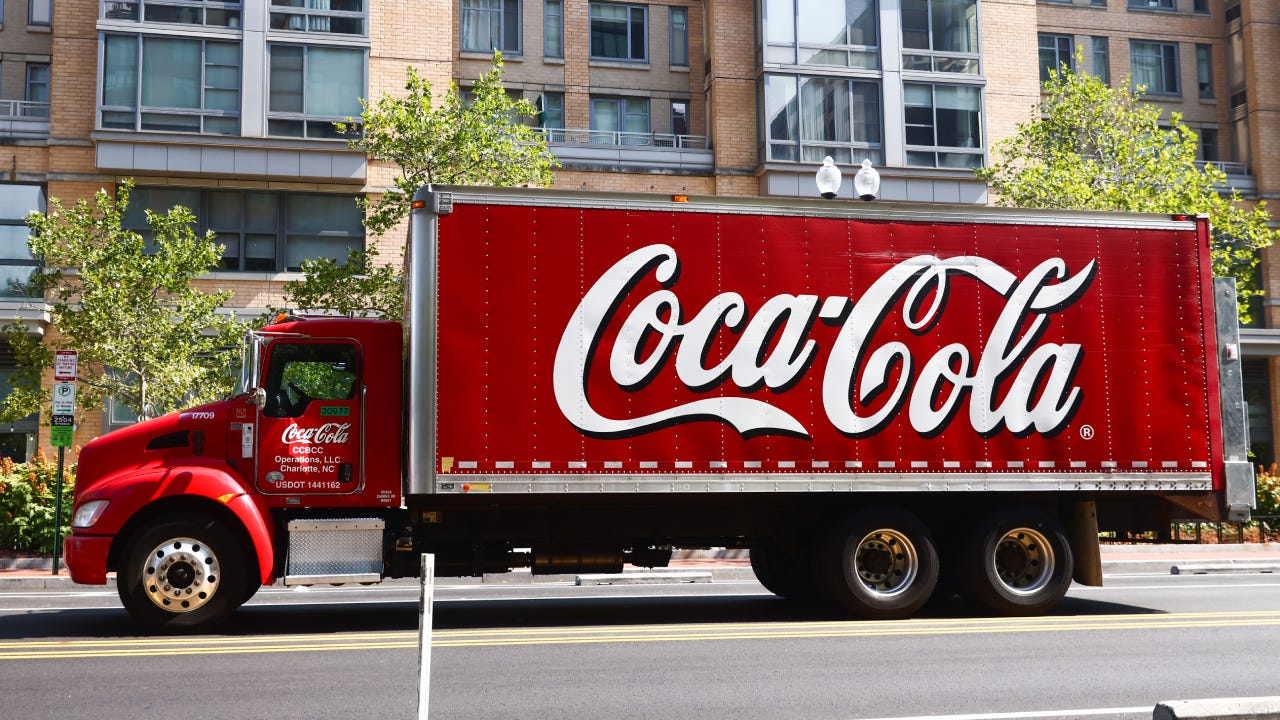Top stocks of the past 100 years: What they reveal about long-term investing

History shows that long-term investing can yield substantial rewards. By holding stocks over extended periods, investors can benefit from the power of compounding returns and weather short-term price drops.
Most investors are lucky to watch their investments grow for 30 or 40 years, but what if that timeline was extended to nearly a century? How much could investors make from the stock market’s top performers? And which companies would win the long game?
This article explores the 10 best-performing stocks of the past century, as identified in a July 2024 study by Hendrik Bessembinder, a finance professor at Arizona State University.
10 best-performing stocks of the past century
Bessembinder’s study, “Which U.S. Stocks Generated the Highest Long-Term Returns?” analyzed the performance of more than 29,000 publicly traded stocks listed on the Center for Research in Security Prices (CRSP) daily common stock database from December 1925 to December 2023.
The data was evaluated based on a buy-and-hold strategy, where dividends were reinvested in the same stock.
The following list showcases the top 10 stocks based on their cumulative compound returns over the last 98 years.
The magnitude of these returns is remarkable. Investors could have turned a single dollar into as much as $123,724 by investing in Coca-Cola in December 1925 or a mind-blowing $2.65 million by investing $1 in Altria Group (formerly Philip Morris) during the same period.
1. Altria Group (MO)
- Years of returns: 98
- Return per $1: $2.65 million
- Cumulative compound return: 265,528,901 percent
- Annualized compound return: 16.3 percent
Altria Group, formerly Philip Morris, is a leading tobacco company, known for brands such as Marlboro and Black & Mild, along with smokeless tobacco and electronic cigarette products. The company has a dominant market share in the U.S. and has retained its position despite increasing regulatory pressure and declining smoking rates in the U.S.
Altria has a strong history of paying dividends to shareholders and tops Bankrate’s list of high-dividend stocks. Dividends offer a steady stream of income for investors, separate from stock price appreciation. That can be especially appealing to people seeking passive income in their portfolios.
Altria has consistently increased dividend payments for 55 years in a row, earning its crown as a Dividend King. With a yield of 7.9 percent as of Aug. 26, 2024, Altria also has one of the highest dividend rates in the S&P 500 index.
Some ethical investors may have reservations about supporting a company that profits from selling a highly addictive substance to millions of people around the world. But for buy-and-hold investors, given a high, consistent dividend and an astounding cumulative compound return of more than 2.6 million percent over 98 years, it’s hard to argue with the stock’s long-term outperformance.
2. Vulcan Materials (VMC)
- Years of returns: 98
- Return per $1: $393,492
- Cumulative compound return: 39,349,084 percent
- Annualized compound return: 14.1 percent
Vulcan Materials isn’t a household name, but this 115-year-old company is the United States’ largest producer of construction aggregates, the crushed rocks used to make concrete, cement, asphalt and other materials essential for infrastructure projects. It also operates hundreds of quarries and processing facilities around the world.
Vulcan Materials has a few competitive advantages, including its extensive network of quarries along with a strong balance sheet and cash flow. The company’s ability to supply high-quality materials at competitive prices has helped solidify its market position.
The stock recently received a strong buy signal from several Wall Street analysts, with an average forecast price target increase of 14.18 percent as of Aug. 26, 2024, according to Tipranks.
3. Kansas City Southern (KSU)
- Years of returns: 96
- Return per $1: $361,757
- Cumulative compound return: 36,175,578 percent
- Annualized compound return: 14.3 percent
Incorporated in 1887, Kansas City Southern was a railroad company that operated a network of railways in North America. The company’s network connected major markets in the U.S. and Mexico, providing essential transportation services for businesses in both countries.
However, Kansas City Southern is more of a legacy than an investment at this point. In March 2023, it merged with Canadian Pacific, creating the first single-line railway connecting the U.S., Mexico and Canada. Investors interested in buying shares of railway companies could research Canadian Pacific Kansas City Limited (CP), the new company formed post-merger.
4. General Dynamics (GD)
- Years of returns: 98
- Return per $1: $220,850
- Cumulative compound return: 22,084,880 percent
- Annualized compound return: 13.4 percent
General Dynamics is a global aerospace and defense company that provides aircraft, ships, combat systems and information technology solutions. As a defense contractor, its primary customer is the U.S. government and its main competitor is Lockheed Martin.
Although incorporated in 1952, General Dynamics traces its history back to 1899 with the founding of the Electric Boat Company. Despite its lengthy history, GD remains a strong buy among 13 Wall Street analysts’ price targets, according to Tipranks. Analysts forecast a 13.1 percent average increase for the stock over the next 12 months, as of August 2024.
5. Boeing (BA)
- Years of returns: 89
- Return per $1: $212,206
- Cumulative compound return: 21,220,526 percent
- Annualized compound return: 14.7 percent
Boeing is a global aerospace company that designs, manufactures and services commercial and military aircraft.
Boeing has faced some major challenges in recent years, most notably the grounding of its 737 MAX aircraft following two fatal crashes, as well as a door plug flying off its 737 MAX plane in January 2024.
The headwinds have kept Boeing’s stock suppressed, with shares tumbling a dramatic 32 percent from Jan. 2, 2024, through Aug. 23, 2024. Meanwhile, the S&P 500 saw a 17.5 percent increase during the same time. It marks another year of losses for the aerospace giant.
Recent setbacks and declines aren’t included in the study data but past valleys didn’t made a dent in the company’s impressive more than 21 million percent 89-year cumulative return. And with only one major competitor (Airbus), Boeing’s dominance in the aerospace industry is likely to help the shares weather some ongoing turbulence. That’s good, because the stock price might be volatile in the short term.
6. International Business Machines (IBM)
- Years of returns: 98
- Return per $1: $175,437
- Cumulative compound return: 17,543,644 percent
- Annualized compound return: 13.1 percent
IBM, or International Business Machines, is a technology company dating back to 1911. While it’s often associated with the early days of mainframe computers, it’s successfully reinvented itself again and again over the decades to remain a player in the tech industry — and a consistent moneymaker for investors over time.
IBM has a history of returning value to shareholders through dividends. However, company shares have been disappointing in recent years. It has yet to exceed an all-time high of $206 set in 2013 — more than a decade ago. It’s up for debate whether this veteran tech giant’s best days are behind it.
While the company’s revenue growth has been lackluster recently, its free cash flow remains strong, allowing IBM to pursue acquisitions, stock buybacks and dividends.
7. Eaton Corp (ETN)
- Years of returns: 98
- Return per $1: $151,173
- Cumulative compound return: 15,117,168 percent
- Annualized compound return: 12.9 percent
Eaton is a global technology and power management company. Since it launched over 100 years ago, it has evolved from a small manufacturer of electrical components to a leading multinational player.
Founded in 1911, Eaton is making headlines in 2024 as a potential player in the artificial intelligence craze. As more companies deploy data centers to power their AI software, the need for reliable and efficient energy infrastructure is booming. Eaton’s sales, earnings and organic growth all came in ahead of analysts’ expectations in its first-quarter 2024 results.
As the company points out on its website, “The world’s demand for power keeps growing.” Increasing demand is always a good sign for businesses, especially an established, efficient operation like Eaton.
And the company keeps winning. As recently as March 2024, Zacks Equity Research named Eaton a top growth stock for the long term. The idea of a 113-year old company still performing like a young growth stock is pretty incredible, and should be an encouraging sign for investors.
8. S&P Global Inc. (SPGI)
- Years of returns: 95
- Return per $1: $128,787
- Cumulative compound return: 12,878,643 percent
- Annualized compound return: 13.2 percent
S&P Global is a leading provider of intelligence and data for financial markets, businesses and governments. Offerings span four key divisions: credit ratings, market intelligence, indexes and risk solutions. The company has carved out an essential role in the financial markets during its more than 164-year history, and it faces little competition.
Top-performing stocks often keep winning, and S&P Global is no exception. Despite being one of the oldest companies on this list, its recent stock performance is impressive. During the 10 years leading up to August 2024, shares of S&P Global increased 518 percent, while its benchmark index, the S&P 500, gained only 180 percent over the same period.
S&P Global has also reliably raised its dividend over time, making it one of fewer than 25 companies in the S&P 500 to annually increase its dividend for at least 51 years straight. S&P Global was rated a strong buy in August 2024 based on 10 Wall Street analysts’ price targets, according to Tipranks.
9. Coca-Cola (KO)
- Years of returns: 98
- Return per $1: $123,724
- Cumulative compound return: 12,372,265 percent
- Annualized compound return: 12.7 percent
Founded in 1886, Coca-Cola is a quintessential blue chip stock with one of the most recognizable brands in the world. And the company’s extensive distribution network allows it to reach consumers in virtually every corner of the globe.
While Coca-Cola faces challenges such as increasing competition and health-conscious consumers, decades of brand loyalty coupled with a massive global reach have helped reap impressive cumulative returns for long-term investors.
With its 62-year streak of dividend increases, Coca-Cola has also rewarded shareholders who reinvested their dividends over time. That’s likely why it’s one of the longest-held stocks of legendary investor Warren Buffett.
The company’s appeal lies more in its consistent performance over the long term, rather than eye-catching growth. Coca-Cola is a mature business that tends to grow at an annual mid single-digit pace. That might not excite new investors seeking rapid gains, but it delivers on stability and predictability.
For patient investors willing to ride out stock market fluctuations, buying shares of Coca-Cola during a dip could be a strategic buy-and-hold move.
10. PepsiCo (PEP)
- Years of returns: 98
- Return per $1: $86,360
- Cumulative compound return: 8,635,938 percent
- Annualized compound return: 12.3 percent
Hot on Coca-Cola’s heels is its biggest rival, PepsiCo. Like Coca-Cola, Pepsi has evolved over time to include a wide portfolio of brands, including Frito-Lay, Doritos and Quaker.
Like the two companies themselves, shares of PepsiCo and Coca-Cola hold many similarities. Like Coca-Cola, PepsiCo has offered a solid and reliable dividend for investors, boosting it annually for 52 years, just a decade shy of Coca Cola’s streak.
Pepsi is also a mature, blue chip stock, so don’t expect it to run away with double-digit growth. In fact, it’s quite possible the stock price will fluctuate in the short term, and there may be periods of decline, especially during economic downturns or pullbacks in consumer spending.
But over the long haul, PepsiCo has delivered for shareholders. If your great-grandmother had invested $1 in PepsiCo in December 1925 and you inherited her investment, you’d have about $86,360 today.
What top-performing stocks of the past century reveal about long-term investing
Here are other key findings from Bessembinder’s study on the best-performing stocks of the past 100 years, along with how investors can apply some of these lessons to their own portfolio.
Most companies don’t last a century
The average stock in the broader study (not just the 30 best-performing) were only present in the database for about 11.6 years, making companies on this list relative outliers.
This demonstrates that few businesses have the staying power to last for generations — let alone remain profitable. It also highlights the importance of selecting companies with a long-term outlook.
Time is the secret ingredient of wealth
The top-performing stocks generated relatively modest annualized returns, averaging 13.5 percent a year. Time — not short-term spikes — is their superpower for building wealth. Returns had an average of 92 years to compound.
Several technology stocks have been the biggest winners over the past five and 10 years, returning investors’ money many times over in just a few years. But except for IBM, none of these technology stocks have been around long enough to accumulate the staggering compound returns of veteran companies.
This long time horizon underscores the adage of “time in the market” as a key driver of investment success. It’s like the old story of the tortoise and the hare. The hare was faster in the beginning, but the tortoise made it all the way to the end. And in this case, made sure to reinvest their dividends along the way.
Past performance is no guarantee of future results
While it’s easy to become fixated on past performance, remember that a stock’s history doesn’t guarantee future returns. Don’t assume a high-performing stock has reached its peak or that it’ll continue its winning streak. Instead, dive into the fundamentals of each company to determine whether the stock is healthy and has growth potential.
Index funds give you exposure to top performers
If you’re considering individual stocks, thorough research and due diligence is important. But this can be time-consuming, so many investors prefer the simplicity of a diversified index fund. A S&P 500 index fund, for example, has historically outperformed the majority of individual investors through a buy-and-hold strategy.
With an S&P 500 index fund, you’ll get hundreds of the market’s top performers, including several on this list, like Boeing, Coca-Cola, Vulcan Materials and IBM. That way, you’ll gain exposure to both older, consistent companies as well as newer, growth-oriented ones.
Bottom line
The top-performing stocks of the past century reveal that time is a powerful force in investing. By remaining invested for extended periods, investors can harness this power in their own portfolio, even if they don’t have 100 years to compound returns.
However, it’s always important to remember that past performance is not indicative of future results — just look at Boeing’s recent losses or IBM’s lackluster returns over the past 11 years.
For those seeking a simpler approach, index funds offer a diversified way to gain exposure to many of the best-performing stocks of the past century — along with newer players, too.
Editorial Disclaimer: All investors are advised to conduct their own independent research into investment strategies before making an investment decision. In addition, investors are advised that past investment product performance is no guarantee of future price appreciation.






